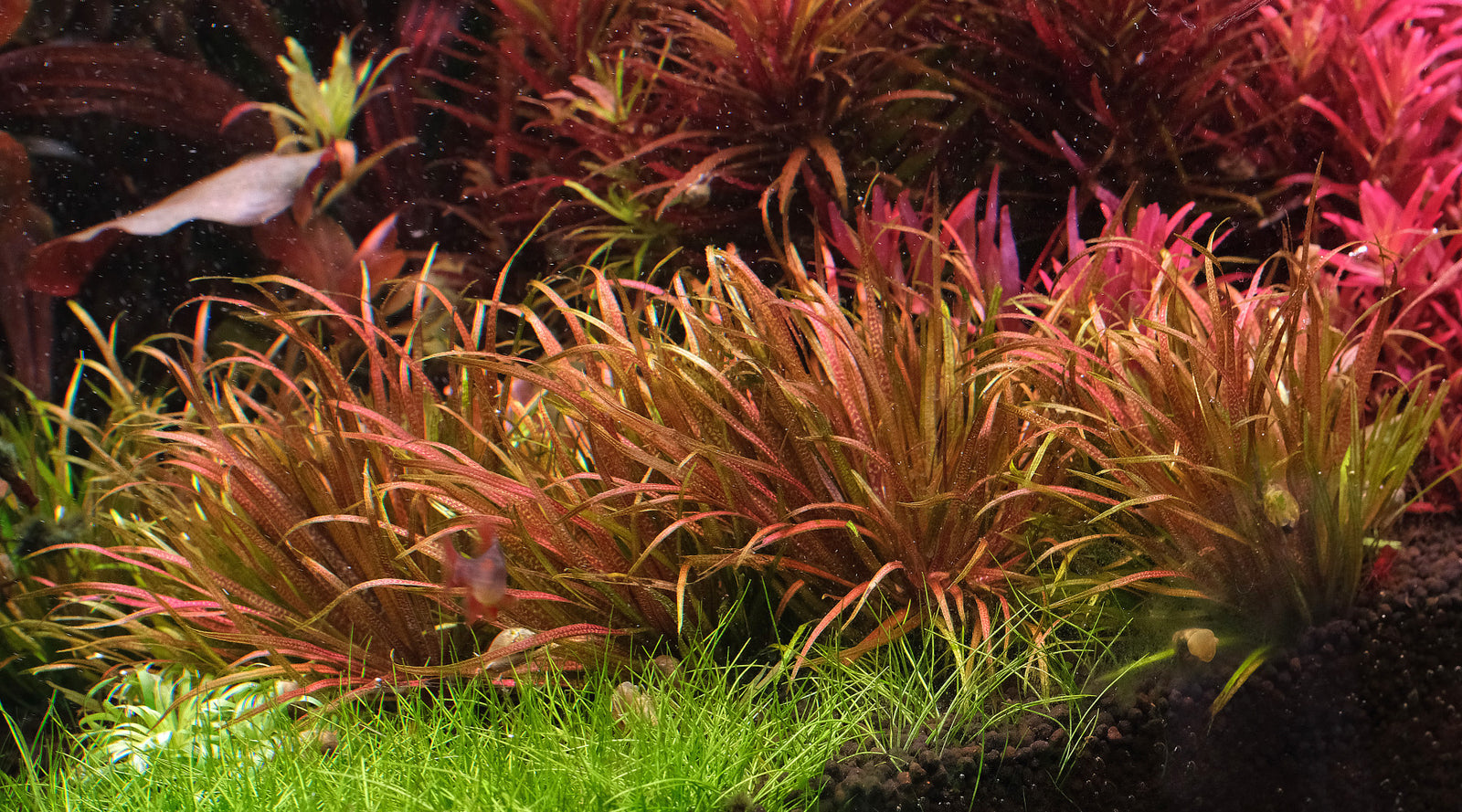
Grown under 200 umols of PAR using APT Complete in a densely planted tank.
Introduction
Blyxa japonica is a true aquatic plant; one that does not have an emersed form and grows only under water. It originates from Asia, where it can be found in shallow ponds and rivers. Blyxa japonica has been in the aquarium hobby a long time, and is well liked for its bushy, grass-like growth form. It has yellowish green leaves that take on golden and reddish hues when grown under higher light levels. It is actually a stem plant, but the internodes are so closely spaced it looks like it is a rosette instead. The plant also favors spawning new shoots at the lower parts of the stem rather than top, which makes it naturally bushy. In favorable conditions, this plant will flower under water. The flowers develop into seed pods. These seed pods can lay dormant for a long time before sprouting new plants.
Due to its medium height, Blyxa japonica does great in the mid ground of tanks. It can be used as a background plant in smaller tanks but it does require some time to gain height. Its controlled growth rate and height makes it great for aquascaping.
Blyxa japonica likes stability in its growth environment and takes awhile to adapt when transferred into a new tank/environment. During this transition period, shedding of leaves or even melting in severe cases is not uncommon. Once adapted to the environment and rooted, it is a very resilient plant that is tolerant of lean growth parameters. However, to get it to strive, it does require regular access to both macro and micro nutrients. This can be done either by the water column or root zone fertilization or both. It has a robust root system and does great on root tabs. Poorly fed plants are sparser, having shorter, paler leaves.
A popular myth is that Blyxa japonica is a soft water plant and needs soft water to grow well. It does very well in hard water – up to 10+ dKH/dGH. The problems that people face with it in hard water may well be tied to nutrient availability (the lack of) in harder water when dependent solely on water column fertilization. Using a nutrient rich substrate or heavier water column dosing should side-step most of the issues when growing it in hard water.
While it can grow in non CO2 injected tanks; especially shallow ones with good gaseous exchange, it grows best with CO2 injection. Higher light levels give it an attractive golden/reddish color tone which gives a subtle tonal contrast to green plants. Moving a plant that was grown previously in the shade to a much brighter area tans the leaves quickly. However, sun tanning aside, it is not a particularly light demanding plant.
Key success factors
- CO2 injection, even at lower saturation, greatly improves success rates
- Stable, matured tank environment reduces incidents of melting or algae when planting this plant
- Regular all round fertilization is necessary for faster growth
- Pale/whitish leaves is a sure sign that nutrient levels are too low
- Higher light levels and longer lighting hours can give the plant reddish hues
Trimming and propagation
Blyxa japonica can be quite buoyant and difficult to plant. Select longer stems and clear the leaves lower down the stem till you have a couple of centimeters of clear stem to plant into the substrate. Planting in single stems is much easier than trying to anchor down a large bunch.
Propagation and trimming is very easy with Blyxa japonica. In most instances, the plant need not be uprooted at all and can be thinned out by cutting off excess stems near the base of the plant. These stems can then be replanted.


